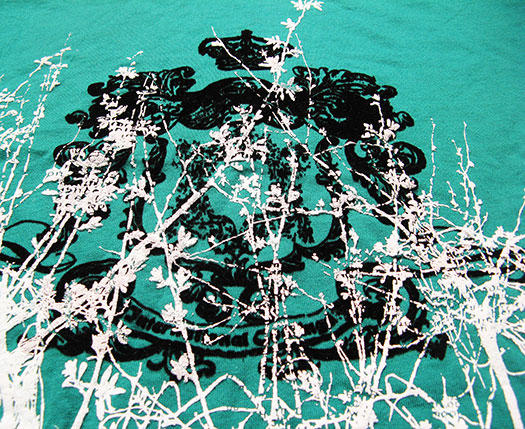November 6, 2013
Although there are basic parameters and best practices for how to screen print, the process still allows for a lot of artistic leeway.
Given the variety of inks and tools, screen printing is not always an exact science. Using various inks and additives, printers can still infuse a lot of creativity, even into a simple design.
Many screen printers seem to have lost that experimental sense of approach when it comes to trying something new or combining various inks. If you’re too afraid to make a mistake, you can miss out on developing a new technique or an interesting texture.
Most additives can be added to standard inks. You can add stretch additive, a nylon catalyst to make ink stick better, a low-cure additive, etc. The only thing to remember is that any additive will cause a reaction.
If you add something to change one characteristic of the ink, you are diluting one of its other characteristics. For example, if you add 5% curable reducer to lower the viscosity, then you can expect that the opacity of the ink will lessen. If you add a regular type of ink to low-bleed polyester ink, then you may see some kind of reduction in its bleed-blocking capabilities. Or, if you add a nylon type of adhesive additive, then you may experience a tougher, more durable ink film.
Keeping this in mind, don’t be afraid to experiment and try something new. You can even add or mix small quantities at a time just for testing purposes.
Kieth Stevens is the Western regional sales manager for International Coatings. He has been teaching screen printing for more than 10 years and is a regular contributor to International Coatings’ blogs. For more information, visit iccink.com and read the company’s blog at internationalcoatingsblog.com.
April 18, 2024 | Digital Decorating, Screen Printing
Stratasys Ltd. has launched what it describes as a new direct-to-garment (DTG) solution for its J850 TechStyle printer, the newest offering in the Stratasys 3DFashion direct-to-textile printing technology product line.
FULL STORY
April 17, 2024 | Industry, Screen Printing
The Women’s California Wave Wash Sunday Hoodie, offered by the Independent Trading Co., is the latest style in this collection, which also features crew necks, pullovers and full-zip styles.
FULL STORY
April 9, 2024 | Industry, Screen Printing
Per the research firm Future Market Insights (FMI) starting from a 2023 baseline of $3.4 billion, the custom T-shirt printing market in the United States is projected to reach $9.9 billion by 2033.
FULL STORY




